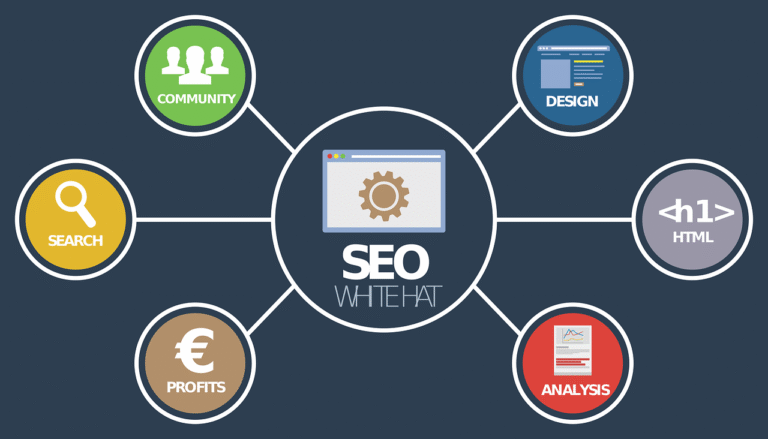GDPR-Conscious SEO: How to Improve Your Website Without Violating Privacy Rules
Why SEO and Privacy Now Collide
For years, marketers treated SEO and privacy compliance as two different worlds. One focused on visibility, the other on legal fine print. But 2025 is making them inseparable.
Today’s search engines — and AI-driven assistants like Google’s Search Generative Experience (SGE) and Bing Copilot — favor websites that users trust. And in the EU, trust begins with privacy.
If your SEO strategy depends on invasive tracking, cookie abuse, or non-consensual analytics, you’re not only breaking the GDPR — you’re quietly losing rankings.
In this article, you’ll learn how to balance performance and compliance: how to make your site faster, more visible, and more transparent, without risking fines or user trust.
What GDPR Means for Your SEO Strategy
Let’s start with the basics. The General Data Protection Regulation (GDPR) protects personal data of EU citizens.
That includes:
- Cookies and trackers used for analytics or marketing.
- IP addresses, device IDs, and location data.
- Contact forms, newsletter signups, and CRM entries.
For SEO professionals, GDPR affects:
- Tracking tools – Google Analytics, Facebook Pixel, Hotjar, etc.
- User data storage – contact forms, comment systems, newsletters.
- Third-party embeds – YouTube videos, Google Maps, chat widgets.
Violating these rules can result in legal penalties (up to 4% of annual revenue) — but even without fines, a privacy-broken site bleeds SEO performance.
Search engines increasingly reward transparency and penalize bad user experience. Intrusive pop-ups, cookie overload, or slow third-party scripts drag down both trust and Core Web Vitals.
How GDPR Impacts Core SEO Metrics
1. Page Speed and Core Web Vitals
Extra scripts for tracking and remarketing increase load times.
Google Lighthouse, PageSpeed Insights, and Chrome UX reports now weigh performance heavily — and GDPR-unfriendly scripts are usually the culprit.
Reducing unnecessary trackers improves:
- Largest Contentful Paint (LCP)
- First Input Delay (FID)
- Cumulative Layout Shift (CLS)
Faster sites = higher rankings and happier visitors.
2. Bounce Rate and Engagement
Users leave when hit with intrusive cookie banners or confusing consent modals.
A properly designed, minimalist consent banner increases engagement and dwell time — both soft SEO signals.
3. Trust and E-E-A-T Signals
Google’s E-E-A-T framework (Experience, Expertise, Authoritativeness, Trustworthiness) now directly influences how AI systems select sources for summaries.
Privacy transparency builds “trustworthiness.”
When your privacy page is clear, up-to-date, and linked from every footer, it sends a strong trust signal.
The Paradox: Tracking vs. Compliance
Marketers love data. Regulators love privacy. Most businesses sit nervously between the two.
Here’s the reality: you can still track and measure performance ethically. You just need to choose the right tools and configure them correctly.
Step-by-Step: GDPR-Conscious SEO Optimization
Step 1: Audit Your Current Trackers
Use Webbkoll, Cookiemetrix, or Cookiebot Scanner to see:
- Which cookies load before consent.
- Which third-party scripts are active.
- Whether your consent banner truly blocks tracking until accepted.
If you’re using Google Tag Manager, check that all analytics and pixels are behind consent triggers, not firing on page load.
Step 2: Choose Privacy-Friendly Analytics
Google Analytics 4 (GA4) can be GDPR-compliant if configured correctly — IP anonymization, no personal identifiers, limited data retention.
But some EU regulators still view it skeptically.
Consider alternatives:
- Plausible Analytics – lightweight, EU-hosted, cookieless.
- Matomo – open-source and self-hostable.
- Simple Analytics – GDPR-compliant by design.
All of these deliver actionable metrics (traffic, sources, conversions) without storing personal data.
SEO benefit: fewer scripts, faster load, no cookie consent barriers.
Step 3: Rebuild Your Cookie Banner (and Make It Friendly)
A bloated banner can ruin user experience.
Follow these rules:
- Load it asynchronously — never block main content.
- Make “Reject” as visible as “Accept.”
- Link directly to your Privacy Policy and Cookie Policy.
- Don’t pre-tick boxes.
- Avoid dark patterns (like hiding decline buttons).
Tools like CookieYes or Complianz simplify setup for WordPress.
SEO bonus: accessible, mobile-optimized banners reduce bounce rate.
Step 4: Optimize Your Privacy Policy for SEO
Your Privacy Policy isn’t just legal text — it’s an SEO asset.
Treat it like a real page:
- Use clear headings (H2/H3).
- Explain which data you collect, why, and for how long.
- Add internal links to your contact, forms, and analytics pages.
- Include a publication date and updates (for freshness signals).
Search engines notice structured, transparent content.
A well-written policy can even rank for queries like “GDPR compliant analytics for SMEs.”
Step 5: Improve Consent Workflow on Forms
Every contact or signup form should:
- Ask only for data you actually need.
- Include a checkbox confirming consent.
- Link to your Privacy Policy.
For WordPress, plugins like Gravity Forms, WPForms, or Formidable Forms include built-in GDPR options.
Avoid pre-checking boxes — consent must be explicit.
Step 6: Secure User Data Storage
If your site stores user data, even temporarily, you must:
- Use HTTPS (SSL certificate).
- Limit access to databases.
- Delete old data regularly.
Google rewards HTTPS sites; insecure pages can trigger “Not secure” warnings that tank click-through rates.
Step 7: Monitor Compliance with Automation
Tools like n8n.io, Zapier, or Make.com can automate:
- Tracker audits.
- Privacy policy reminders (e.g., every 6 months).
- Data deletion workflows.
Contact us to get a a recurring Lighthouse + GDPR scan using n8n, similar to our automated health reports.
How GDPR-Friendly SEO Helps You Rank Better
Here’s the simple logic Google’s algorithms and AI assistants follow:
- Fast website = better user experience → higher rankings.
- Fewer scripts = faster load times → improved Core Web Vitals.
- Clear privacy signals = trust → higher E-E-A-T.
- Better UX = lower bounce rate → stronger engagement metrics.
GDPR-conscious optimization doesn’t just keep you legal — it directly improves technical SEO.
The Link Between GDPR and AI SEO
Search engines powered by AI (like Google SGE and Bing Copilot) prioritize trustworthy content and safe domains.
When AI answers cite sources, they pick websites that show:
- Verified brand identity.
- Secure HTTPS and privacy policies.
- Transparent authorship and data handling.
A GDPR-compliant site looks safer to algorithms — and is more likely to appear inside AI-generated answers.
Technical Checklist: GDPR and SEO Harmony
| Category | SEO Benefit | GDPR Action | Tools |
|---|---|---|---|
| Analytics | Faster load, accurate metrics | Replace GA with Plausible or Matomo | plausible.io, matomo.org |
| Cookies | Lower bounce, cleaner UX | Use compliant consent banner | Complianz |
| Security | HTTPS ranking boost | Use SSL & firewall | Cloudflare |
| Data Retention | Better site hygiene | Set auto-delete policies | Database or CRM |
| Transparency | E-E-A-T improvement | Update Privacy Policy quarterly | Manual + reminder automation |
Real Example: Plausible + WordPress = SEO & GDPR Win
A small Italian e-commerce brand switched from Google Analytics to Plausible.
Results after one month:
- Page load improved from 2.7s → 1.3s.
- Bounce rate dropped 15%.
- Consent banner removed (Plausible uses no cookies).
- Core Web Vitals scores passed in all Lighthouse categories.
Outcome: +18% organic traffic in 60 days, with zero GDPR worries.
Mistakes to Avoid
- Disabling all analytics – You still need data, just collect it responsibly.
- Copy-pasting privacy policies – They must reflect your actual practices.
- Using cookie banners that block UX – Compliance should feel invisible.
- Relying on old “implied consent” banners – Explicit consent is required in the EU.
- Ignoring server logs – Even IPs in logs count as personal data if stored long-term.
How to Talk About Privacy on Your Website
Instead of scaring users with legalese, position privacy as a value.
Example wording:
“At YourWebsite, we respect your privacy as much as your need for speed. We only measure what truly helps improve your experience — nothing more.”
That tone builds empathy and aligns with Google’s shift toward human-first experiences.
Resources for Staying Updated
- Official GDPR Text (EU)
- European Data Protection Board Guidelines
- Google’s Privacy & Terms Hub
- GDPR and SEO: What is GDPR and How it Impacts SEO?
- 6 Ways GDPR was a gift for SEO – Search Engine Journal
- GDPR | HubSpot Connect
Bookmark these to monitor evolving compliance trends.
The Strategic Advantage of GDPR-Conscious SEO
GDPR compliance isn’t just legal hygiene; it’s strategic marketing positioning.
- You can advertise your services as GDPR-friendly digital solutions.
- You’ll attract privacy-conscious clients and industries (health, education, finance).
- You’ll future-proof your brand as data regulations expand globally.
AI-driven search engines increasingly prefer ethical, transparent websites.
By optimizing for both SEO and GDPR today, you’re building the foundation for long-term credibility.
Conclusion: Privacy as the New SEO Power Move
The future of search belongs to brands that users trust — and users trust brands that protect their data.
By auditing your trackers, simplifying consent, using privacy-first analytics, and treating transparency as part of your brand identity, you’ll gain two wins at once: better rankings and deeper trust.
Forget the false trade-off between compliance and performance.
In 2025, privacy is performance.
If you’d like to audit your site for both SEO and GDPR readiness, reach out at Anaptika.com/contact or request an SEO & Lighthouse Report — available in English, Italian, and Spanish.
Because good SEO should never come at the expense of your visitors’ privacy.
© 2025 Anaptika – Multilingual Digital Optimization & Automation for EU Small Businesses


